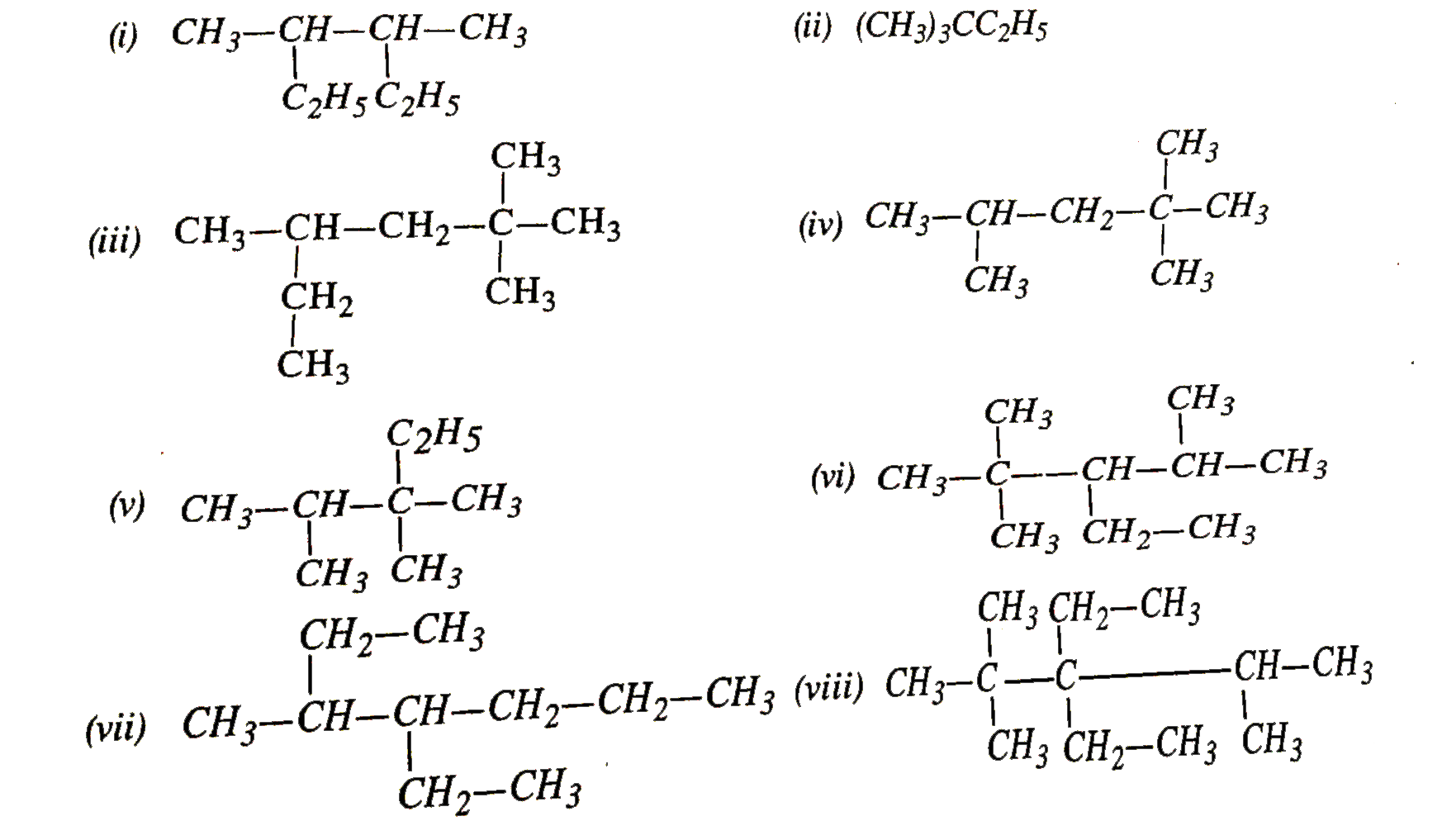The following two isomeric alkenes are related as−
(I) CH3−CH=CH−CH2−CH2−CH3
(II) CH3−CH2−CH=CH−CH2−CH3
Metamers
Positions isomers
Metamers as well as position isomers
Geometrical isomers
The correct Answer is:B
To solve the problem regarding the two isomeric alkenes, we will analyze the structures of the given compounds and identify their isomeric relationship step by step.
Step 1: Identify the Structures of the Alkenes
1. Alkene (I): CH₃-CH=CH-CH₂-CH₂-CH₃
- This structure has a double bond between the second and third carbon atoms when counted from the left.
2. Alkene (II): CH₃-CH₂-CH=CH-CH₂-CH₃
- This structure has a double bond between the third and fourth carbon atoms when counted from the left.
Step 2: Number the Carbon Atoms
- For Alkene (I):
- Numbering from the left:
- C1: CH₃ (1)
- C2: CH (2)
- C3: CH (3)
- C4: CH₂ (4)
- C5: CH₂ (5)
- C6: CH₃ (6)
- For Alkene (II):
- Numbering from the left:
- C1: CH₃ (1)
- C2: CH₂ (2)
- C3: CH (3)
- C4: CH (4)
- C5: CH₂ (5)
- C6: CH₃ (6)
Step 3: Determine the Position of the Double Bond
- In Alkene (I), the double bond is located between C2 and C3 (position 2).
- In Alkene (II), the double bond is located between C3 and C4 (position 3).
Step 4: Identify the Type of Isomerism
- Since the position of the double bond differs between the two alkenes, they are classified as position isomers. This means they have the same molecular formula but differ in the location of the double bond.
Conclusion
The two alkenes are related as position isomeric alkenes.
Final Answer
The two isomeric alkenes are position isomers of each other.
---
1. Alkene (I): CH₃-CH=CH-CH₂-CH₂-CH₃
- This structure has a double bond between the second and third carbon atoms when counted from the left.
2. Alkene (II): CH₃-CH₂-CH=CH-CH₂-CH₃
- This structure has a double bond between the third and fourth carbon atoms when counted from the left.
- For Alkene (I):
- Numbering from the left:
- C1: CH₃ (1)
- C2: CH (2)
- C3: CH (3)
- C4: CH₂ (4)
- C5: CH₂ (5)
- C6: CH₃ (6)
- For Alkene (II):
- Numbering from the left:
- C1: CH₃ (1)
- C2: CH₂ (2)
- C3: CH (3)
- C4: CH (4)
- C5: CH₂ (5)
- C6: CH₃ (6)
- In Alkene (I), the double bond is located between C2 and C3 (position 2).
- In Alkene (II), the double bond is located between C3 and C4 (position 3).
- Since the position of the double bond differs between the two alkenes, they are classified as position isomers. This means they have the same molecular formula but differ in the location of the double bond.
The two alkenes are related as position isomeric alkenes.
The two isomeric alkenes are position isomers of each other.
Similar Questions
Knowledge Check
CH3CH2CH(CHO)CH2CH3andCH3CH(CHO)CH2CH2CH3 are :-
AChain isomerBPosition isomerCMetamerismDFunctional isomerThe compound C5H12 can be represented by the following two structures.
(i) CH3−CH2−CH2_CH2−CH3
(ii) CH3−CH∣CH3−CH2−CH3
These two structures are related to each other asAallotropesBisotopesCisobarsDisomersWhich is the most suitable reagent among the following distinguish comound (3) from the others?
(1) CH3C≡C−CH3 (2) CH3CH2−CH2−CH3
(3) CH3CH2C≡CH (4) CH3CH=CH2ABromine in carbon tetrachlorideBBromine in acetic acid solutionCAlk. KMnO4DAmmonical silver nitrate
Arrange the following compounds in increasing order of SN1 reactivity.
(a). (I). ClCH2CH=CHCH2CH3, (II). CH3C(Cl)=CHCH2CH3, (III). CH3CH=CHCH2CH2Cl
(b). (I). CH3CH2Br, (II). CH2=CHCH(Br)CH3, (III). CH2=CHBr,
(IV). CH3CH(Br)CH3
(c). (I). (CH3)3CBr, (II). (CH3)2CHBr, (III). CH3CH2CH2Br,
View SolutionName the functional groups present in the following compounds:
(i) CH3−CH2−CH2−OH
(ii) CH3−CH2−CH2−COOH
(iii) CH3−CH2−CHO
(iv) CH3−CO−CH2−CH3
View SolutionGive the names of the following compounds :
(i)CH3−CH2−CH2−CH(OH)−CH3
(ii) CH3−CH2−CH2−COOH
View SolutionWrite the IUPAC of the following compounds :

(ix) CH3−CH−CH−CH2−CH2−CH−CH2−CH(CH3)2 | | | CH3 CH3 CH2−CH2−CH2−CH3
View SolutionCH3CH2CH=CH2 and CH3CH=CH−CH3 show
View Solution
